Resources
About Us
Printed Circuit Board Assembly (PCBA) Market Size, Share & Forecast 2025-2035 | Growth Analysis by Assembly Type, Component Type, Application, End-User & Geography
Report ID: MRSE - 1041514 Pages: 436 Aug-2025 Formats*: PDF Category: Semiconductor and Electronics Delivery: 2 to 4 Hours Download Free Sample ReportThe Printed Circuit Board Assembly (PCBA) Market was valued at USD 86.5 billion in 2024. This market is expected to reach USD 90.91 billion in 2025, and is projected to reach approximately USD 147.4 billion by 2035, at a CAGR of 4.9% during the forecast period of 2025 to 2035.
Key factors driving the growth of the overall printed circuit board assembly market include the increasing demand for consumer electronics and smart devices, rapid expansion of automotive electronics and electric vehicles, growing adoption of IoT and connected devices, accelerating 5G network deployment, rising demand for medical electronics and healthcare devices, and continuous miniaturization trends requiring advanced assembly technologies. However, this growth is restrained by volatile raw material costs and supply chain disruptions, complex regulatory compliance requirements across different regions, increasing labor costs in traditional manufacturing hubs, and technical challenges in assembling high-density interconnect boards.
Additionally, emerging opportunities in electric vehicle electronics, expansion of industrial automation and Industry 4.0 applications, growing demand for wearable and flexible electronics, development of advanced packaging technologies, and rising adoption of AI and machine learning hardware are poised to offer significant growth opportunities for market players. The adoption of automated assembly processes and sustainable manufacturing practices are emerging as notable trends in this market.
Market Drivers and Insights
-market.webp)
Click here to: Get Free Sample Pages of this Report
Growing Demand for Consumer Electronics and Smart Devices
The demand for PCBA is experiencing unprecedented growth due to the continuous evolution of consumer electronics and the proliferation of smart devices. Modern consumers are increasingly adopting smartphones, tablets, laptops, smart home devices, and wearable technology, driving demand for sophisticated PCB assemblies with higher component density and advanced functionality. The PCBA market benefits from this trend as device manufacturers seek assemblies that can support multiple functions while maintaining compact form factors.
The rise of smart home ecosystems, coupled with increasing consumer expectations for connectivity and performance, is driving this trend. Advanced PCBA solutions, featuring high-density interconnects, multi-layer constructions, and precision component placement, appeal to electronics manufacturers who prioritize product performance and reliability while meeting size constraints.
The consumer electronics revolution has gained significant momentum in recent years, with manufacturers demanding sophisticated assembly solutions that can accommodate complex designs, support high-speed signals, and maintain cost-effectiveness for mass production applications.
Rapid Expansion of Automotive Electronics
Printed circuit board assemblies offer enhanced functionality compared to traditional automotive components due to their ability to integrate multiple electronic systems, support advanced driver assistance systems (ADAS), and enable vehicle connectivity features. The automotive electronics integration process, which includes implementing infotainment systems, engine control units, and safety systems, results in improved vehicle performance and user experience. Research suggests that modern automotive PCBA solutions may provide better reliability and performance due to advanced materials and stringent quality standards.
Automotive PCB assemblies are regarded as critical enablers due to their role in supporting electric vehicle powertrains, autonomous driving technologies, and connected car features. Modern automotive PCBA solutions maintain operational reliability under harsh conditions while providing enhanced functionality, making them particularly attractive to automotive OEMs, tier-1 suppliers, and electric vehicle manufacturers.
The growing body of research supporting automotive electronics benefits, combined with the regulatory push for vehicle safety and emissions reduction, has led to increased adoption among manufacturers seeking to differentiate their vehicles and meet evolving consumer expectations.
Accelerating 5G Network Deployment and IoT Expansion
In recent decades, the telecommunications infrastructure has undergone continuous evolution, with the rollout of 5G networks representing the latest major advancement. This trend was further accelerated during recent years with notable investments in network infrastructure upgrades. The telecommunications PCBA segment is experiencing faster growth as network equipment manufacturers increasingly require high-frequency, low-latency assembly solutions for 5G base stations, small cells, and network equipment.
The 5G and IoT market is being driven by increasing data consumption, growing demand for real-time connectivity, rising adoption of edge computing solutions, and expanding industrial IoT applications. PCB assemblies, being recognized as essential components for high-speed data processing and signal integrity, are positioned to capture a significant share of this growing market.
Furthermore, telecommunications equipment manufacturers and network operators are increasingly emphasizing advanced PCBA solutions due to their performance advantages and ability to support next-generation network requirements, further driving demand for specialized assembly services.
Market Segmentation Analysis
By Assembly Type
Based on assembly type, the printed circuit board assembly market is segmented into Surface Mount Technology (SMT), Through-Hole Technology (THT), and Mixed Technology assemblies. In 2025, the Surface Mount Technology segment is anticipated to dominate the market, accounting for approximately 55% of the total PCBA market. The dominance of SMT is attributed to its superior component density, automated assembly compatibility, and cost-effectiveness for high-volume production.
However, the Mixed Technology segment is projected to record the highest CAGR during the forecast period of 2025-2035. This exceptional growth is driven by increasing complexity of electronic designs requiring both SMT and THT components, growing demand for hybrid assemblies in automotive and industrial applications, and the need for ruggedized connections in harsh environment applications.
The Through-Hole Technology segment maintains steady demand due to its reliability advantages in high-power applications, mechanical strength requirements, and specific connector applications where THT provides superior performance.
By Component Type
The PCBA market is segmented into active components, passive components, and electromagnetic components. In 2025, the active components segment is expected to dominate the market due to the proliferation of semiconductors, microprocessors, and integrated circuits in electronic devices. The active components segment not only commands the largest market share but is also experiencing rapid growth due to the central role these components play in enabling functionality, processing, and control within electronic devices. Active components—such as microprocessors, microcontrollers, memory chips, transistors, and integrated circuits—are essential for amplifying signals, performing computations, managing power, and executing logic operations. The increasing complexity and performance requirements of modern electronics, from smartphones and automotive control units to industrial automation systems and 5G infrastructure, are driving higher demand for sophisticated active components.
By Application
Based on application, the PCBA market is segmented into consumer electronics, automotive, telecommunications, medical devices, industrial automation, aerospace & defense, and others. In 2025, the consumer electronics segment is anticipated to dominate the market with a share of over 40%, reflecting the large global consumer electronics market and continuous product innovation cycles. The large share of this segment is mainly attributed to massive production volumes and constant innovation cycles in devices such as smartphones, laptops, tablets, wearables, gaming consoles, and smart home products. The segment benefits from high global penetration, short product lifecycles that drive frequent upgrades, and the integration of increasingly sophisticated features like AI, IoT connectivity, and high-resolution displays, all of which require advanced PCBAs.
However, the medical devices segment is witnessing rapid growth with a CAGR driven by rising healthcare demand, an aging global population, and the increasing adoption of electronics in diagnostic, monitoring, and therapeutic applications. Devices such as portable patient monitors, imaging systems, infusion pumps, and implantable electronics rely on compact, high-reliability PCBAs designed to meet strict regulatory and safety standards. Additionally, technological advancements in telemedicine, wearable health trackers, and AI-assisted diagnostics are expanding the role of electronics in healthcare, fueling demand for specialized PCBAs with miniaturized, flexible, and biocompatible designs.
By End-User
The printed circuit board assembly market is segmented into Original Equipment Manufacturers (OEMs), Electronics Manufacturing Services (EMS) providers, and Original Design Manufacturers (ODMs). The EMS segment accounts for over 50% of the market in 2025, attributed to the outsourcing trend among electronics companies, specialized assembly capabilities of contract manufacturers, and cost advantages of offshore manufacturing.
The OEM segment shows steady growth driven by companies maintaining in-house assembly capabilities for critical or high-volume products, while the ODM segment benefits from the growing trend of design and manufacturing partnerships.
Regional Analysis
Based on geography, the printed circuit board assembly market is segmented into North America, Europe, Asia-Pacific, Latin America, and the Middle East & Africa. In 2025, Asia-Pacific is anticipated to account for the major share of over 60% of the PCBA market, reflecting the region's established electronics manufacturing ecosystem, cost advantages, and presence of major contract manufacturers.
The market in Asia-Pacific is slated to record a strong CAGR of 5.1% during the forecast period of 2025-2035. This growth is fueled by continued manufacturing capacity expansion, increasing domestic demand for electronics, growing automotive electronics market, and ongoing investments in 5G infrastructure. For PCB assembly specifically, Asia-Pacific's leadership is further strengthened by the concentration of major EMS providers, established supply chains, and government support for electronics manufacturing.
North America follows as the second-largest market, driven by strong demand for advanced electronics, presence of leading technology companies, growing automotive electronics sector, and increasing reshoring initiatives. The region's emphasis on high-technology applications and advanced manufacturing processes contributes significantly to market growth.
Europe represents a significant market driven by automotive electronics demand, industrial automation applications, stringent quality requirements, and growing focus on sustainable manufacturing practices.
Competitive Landscape
The printed circuit board assembly market is characterized by a mix of large contract manufacturers, specialized assembly service providers, and vertically integrated electronics companies. Leading players in the global PCBA market include Hon Hai Precision Industry Co., Ltd. (Taiwan), Flex Ltd. (Singapore), Jabil Inc. (U.S.), Sanmina Corporation (U.S.), Celestica Inc. (Canada), Benchmark Electronics, Inc. (U.S.), Plexus Corp. (U.S.), Kimball Electronics, Inc. (U.S.), Creation Technologies LP (Canada), Nortech Systems, Inc. (U.S.), Key Tronic Corporation (U.S.), Universal Scientific Industrial Co., Ltd. (Taiwan), Shenzhen Kaifa Technology Co., Ltd. (China), EuroCircuits NV (Belgium), Seeed Technology Co., Ltd. (China), Vexos Corporation (U.S.), Tempo Automation, Inc. (U.S.), PCBWay (China), WellPCB Technology Co., Ltd. (China), and TTM Technologies, Inc. (U.S.), among others. These companies are focusing on strategies such as advanced manufacturing technology adoption, capacity expansion in key markets, automation and Industry 4.0 implementation, sustainability initiatives, and strategic partnerships with OEMs to strengthen their market position.
|
Particulars |
Details |
|
Number of Pages |
436 |
|
Forecast Period |
2025-2035 |
|
Base Year |
2024 |
|
CAGR (Value) |
4.9% |
|
Market Size 2024 |
USD 86.5 billion |
|
Market Size 2025 |
USD 90.91 billion |
|
Market Size 2035 |
USD 147.4 billion |
|
Segments Covered |
By Assembly Type, Component Type, Application, End-User |
|
Countries Covered |
North America (U.S., Canada, Mexico), Europe (Germany, France, U.K., Italy, Netherlands, Spain, Sweden, Denmark, and Rest of Europe), Asia-Pacific (China, Japan, South Korea, Taiwan, India, Singapore, Malaysia, and Rest of Asia-Pacific), Latin America (Brazil, Argentina, and Rest of Latin America), and the Middle East & Africa (UAE, Saudi Arabia, South Africa, and Rest of Middle East & Africa) |
The printed circuit board assembly market is projected to reach USD 147.4 billion by 2035 from USD 90.91 billion in 2025, at a CAGR of 4.9% during the forecast period.
In 2025, the Surface Mount Technology (SMT) segment is projected to hold the major share of the printed circuit board assembly market.
The medical devices segment is slated to record the highest growth rate during the forecast period of 2025-2035.
Key factors driving the growth include increasing demand for consumer electronics, rapid expansion of automotive electronics, growing adoption of IoT and 5G technologies, rising medical electronics demand, continuous miniaturization trends, and accelerating industrial automation.
Major opportunities include electric vehicle electronics expansion, industrial automation and Industry 4.0 applications, wearable and flexible electronics development, advanced packaging technologies, and AI/ML hardware adoption.
Asia-Pacific leads the market with the highest share, while all regions are projected to show steady growth, with particular opportunities in emerging markets and regions focusing on electronics manufacturing reshoring.


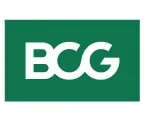
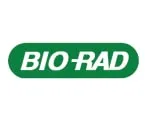
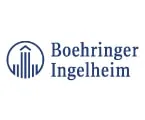

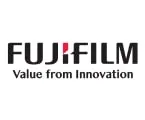
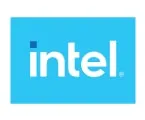

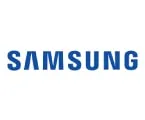


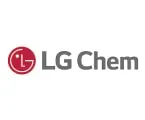





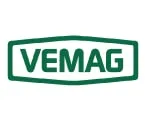


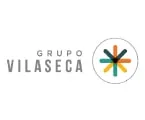


Published Date: Oct-2024
Published Date: Mar-2024
Published Date: Jul-2022
Please enter your corporate email id here to view sample report.
Subscribe to get the latest industry updates